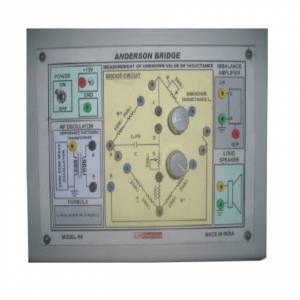The Doppler Ultrasound Blood Velocity Module is an advanced biomedical tool used to measure blood flow velocity in arteries and veins. It utilizes the Doppler effect to assess blood circulation, detect abnormalities, and diagnose vascular conditions. This module is widely used in cardiology, neurology, obstetrics, and general diagnostics.
Applications
🔹 Cardiology: Diagnoses arterial blockages, heart valve defects, and circulation issues.
🔹 Neurology: Assesses cerebral blood flow and detects stroke risk.
🔹 Obstetrics & Gynecology: Monitors fetal blood circulation.
🔹 Vascular Surgery: Detects deep vein thrombosis and arterial narrowing.
🔹 Sports Medicine: Evaluates muscle blood flow and recovery rates.
Features
🔹 Non-invasive blood flow measurement
🔹 Real-time velocity monitoring
🔹 High sensitivity for detecting small vessels
🔹 Portable and compact design
🔹 Integration with imaging systems


Advantages
🔹 Non-invasive and painless procedure
🔹 Real-time, dynamic assessment of blood flow
🔹 Early detection of cardiovascular disorders
🔹 Portable for bedside and outpatient use
🔹 Safe with no radiation exposure
The Doppler Ultrasound Blood Velocity Module is a crucial biomedical innovation for evaluating vascular health. Its high accuracy, real-time data, and non-invasive nature make it essential for diagnosing and managing circulatory disorders, improving patient outcomes in modern medicine.

Blood pressure measurement is a critical parameter in biomedical applications, used for diagnosing and monitoring cardiovascular health. The Blood Pressure Measurement Module is designed to provide accurate and reliable readings of systolic and diastolic pressure using advanced sensor technology and signal processing techniques.
Applications
🔹 Hospitals & Clinics: Used by doctors for routine check-ups and diagnosis.
🔹 Home Healthcare: Enables patients to monitor their BP regularly.
🔹 Wearable Devices: Integrated into smartwatches and fitness monitors.
🔹 Medical Research: Helps in studying cardiovascular diseases.
Features
🔹 Accurate blood pressure measurement.
🔹 Compact and portable design
🔹 Digital display with easy-to-read values
🔹 Wireless connectivity (optional)
🔹 Battery-operated for mobility
🔹 Automatic inflation and deflation

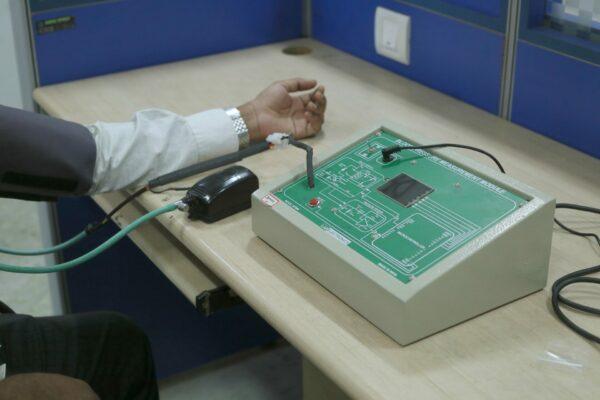
Advantages
🔹 Non-invasive and user-friendly
🔹 Provides real-time health monitoring
🔹 Early detection of hypertension and other conditions
🔹 Helps in remote patient monitoring
A Blood Pressure Measurement Module is a vital biomedical tool for monitoring cardiovascular health. Its integration with digital technology enhances accessibility and accuracy, making it an essential component in modern healthcare solutions.

The Electrocardiogram (ECG) Module is a vital biomedical device used to monitor and analyze the electrical activity of the heart. It records heartbeats as waveforms, helping in the diagnosis of arrhythmias, heart diseases, and overall cardiac health. This module is commonly used in hospitals, clinics, ambulatory care, and wearable health devices.
Applications
🔹 Cardiology: Diagnoses arrhythmias, heart attacks, and other cardiac conditions.
🔹 Wearable Health Devices: Used in smartwatches and fitness trackers.
🔹 Emergency & Critical Care: Essential for monitoring ICU and emergency patients.
🔹 Home Healthcare: Helps individuals monitor their heart health remotely.
🔹 Biomedical Research: Used in heart rate variability (HRV) and stress analysis studies.
Features
🔹 Real-time heart activity monitoring
🔹 Compact and portable design
🔹 Multi-lead ECG signal acquisition (e.g., 3-lead, 6-lead, 12-lead)
🔹 Wireless connectivity for remote monitoring
🔹 High accuracy with noise reduction filters


Advantages
🔹 Non-invasive and painless heart monitoring
🔹 Early detection of heart abnormalities
🔹 Real-time analysis for immediate diagnosis
🔹 Integration with digital health records and AI-based diagnostics
🔹 Portable and cost-effective for widespread use
The ECG Module is an indispensable tool in cardiac diagnostics and monitoring. Its high precision, real-time analysis, and integration with modern healthcare technology make it essential for preventing and managing heart diseases, ensuring better patient outcomes.
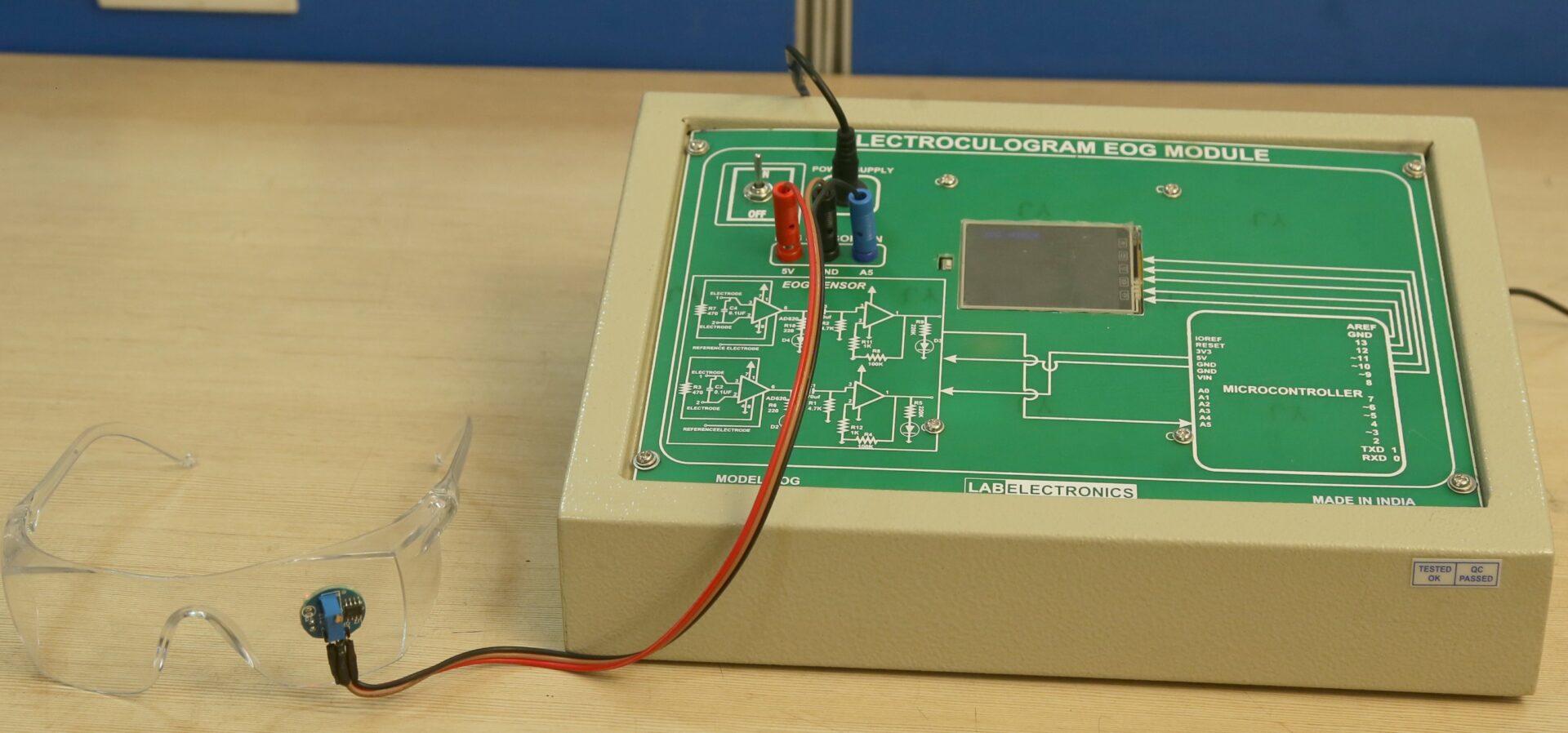
The Electroencephalogram (EEG) Module is a biomedical device used to record and analyze the brain’s electrical activity. It detects neural signals through electrodes placed on the scalp, helping diagnose neurological conditions such as epilepsy, sleep disorders, brain injuries, and cognitive impairments. EEG technology is widely used in medical diagnostics, neuroscience research, brain-computer interfaces (BCIs), and mental health assessments.
Applications
🔹 Neurology: Diagnoses epilepsy, seizures, and neurological disorders.
🔹 Sleep Studies: Assesses sleep cycles and disorders like insomnia.
🔹 Mental Health Monitoring: Helps in depression, anxiety, and stress analysis.
🔹 Brain-Computer Interfaces (BCIs): Enables communication through brain signals.
🔹 Cognitive Research: Studies memory, learning, and brain function.
🔹 Rehabilitation Therapy: Used in stroke recovery and neurofeedback therapy.
Features
🔹 Real-time brainwave monitoring
🔹 Multi-channel signal acquisition (e.g., 8, 16, 32, or more electrodes)
🔹 Portable and wearable EEG designs available
🔹 Noise reduction and artifact removal for accuracy
🔹 Cloud connectivity for remote analysis
🔹 Integration with AI and Machine Learning for automated diagnosis


Advantages
🔹 Non-invasive and painless heart monitoring
🔹 Non-invasive and painless brain activity monitoring
🔹 Early detection of neurological disorders
🔹 Real-time data processing for immediate assessment
🔹 Portable and user-friendly for clinical and home use
🔹 Integration with AI and IoT for smart healthcare solutions
The EEG Module is a cutting-edge tool in neurological diagnostics and brain research. With AI, IoT, and wearable technology advancements, EEG systems are transforming healthcare, neurotechnology, and cognitive research, making brain monitoring more accessible and effective.

The EMG module records electrical impulses produced by muscle fibers during activity. These signals are amplified, filtered, digitized, and analyzed to assess muscle function.
Applications
🔹 Neurology & Rehabilitation – Diagnosing neuromuscular disorders like ALS and muscular dystrophy.
🔹 Sports Science & Performance Analysis – Evaluating muscle activation and fatigue.
🔹 Prosthetics & Exoskeletons – Enhancing control in robotic limbs.
🔹 Physical Therapy & Biofeedback – Assisting in motor function recovery.
🔹 Biomedical Research – Studying muscle coordination and motor control.
🔹 Human-Computer Interaction (HCI) – Enabling gesture-based control and wearable technology.
Features
🔹 Real-time muscle activity monitoring
🔹 Surface and needle EMG recording options
🔹 High-precision signal acquisition with noise reduction
🔹 Portable and wearable EMG sensor designs available
🔹 Cloud connectivity for remote data analysis
🔹 Integration with AI & Machine Learning for advanced diagnostics


Advantages
🔹 Non-invasive muscle function assessment
🔹 Early detection of neuromuscular diseases
🔹 Real-time signal analysis for immediate diagnosis
🔹 Portable and user-friendly for clinical and research use
🔹 Integration with AI and IoT for smart healthcare solutions
The EMG Module is a critical tool in neuromuscular diagnostics, rehabilitation, and muscle function research. With advancements in AI, wearable technology, and IoT, EMG-based systems are revolutionizing medical diagnostics, prosthetics, and sports performance monitoring, making muscle activity analysis more accessible and efficient.
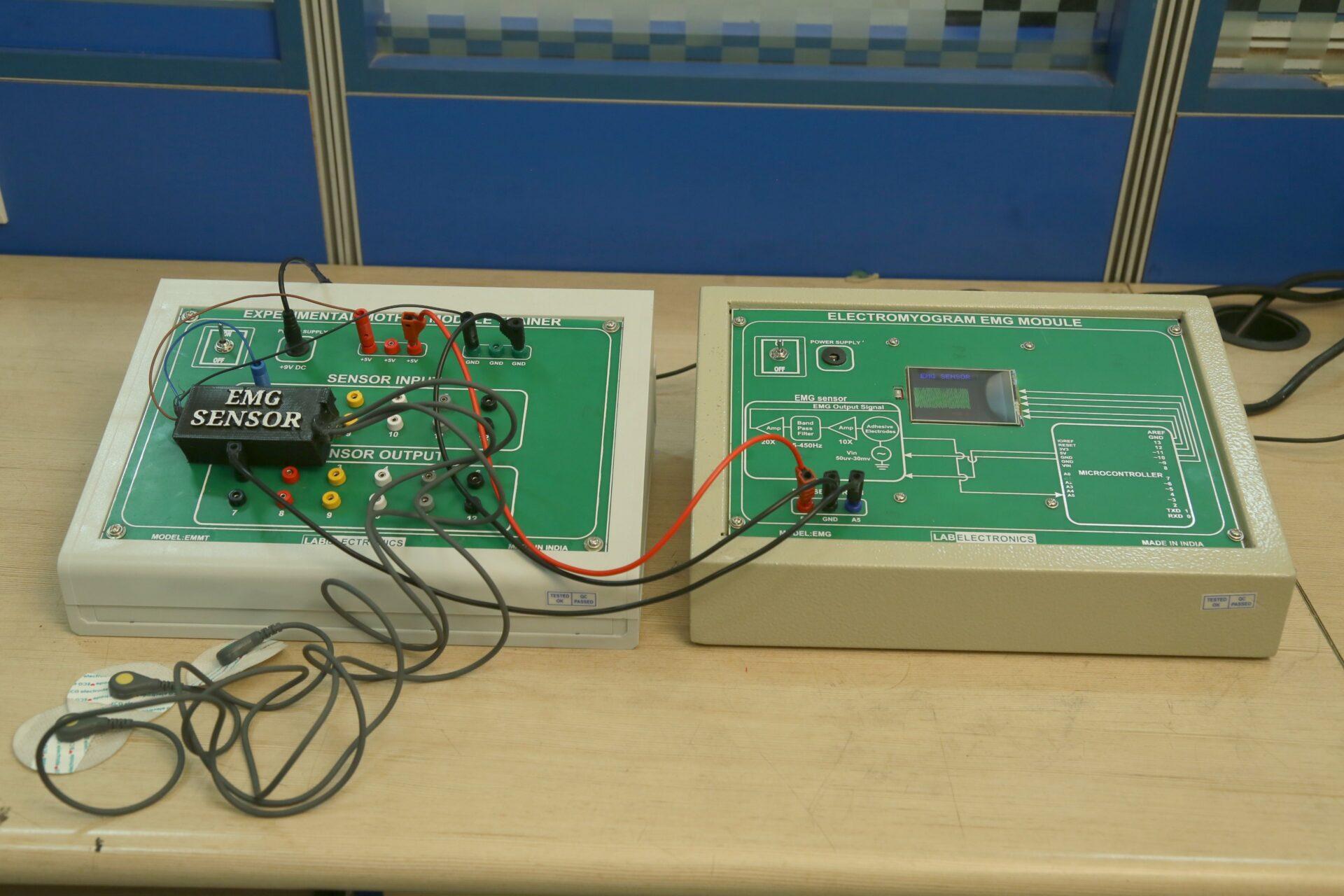
The Experimental Mother Module Trainer is an advanced biomedical training system designed to simulate maternal physiological conditions for research, education, and clinical training. This module helps in understanding pregnancy monitoring, fetal development, maternal health diagnostics, and biomedical signal analysis. It is widely used in medical colleges, research laboratories, hospitals, and simulation centers to train healthcare professionals and biomedical engineers.
Applications
🔹 Medical Training & Education – Used in medical schools to train students on maternal health monitoring.
🔹 Obstetric Research – Helps in studying maternal health conditions and fetal monitoring.
🔹 Biomedical Signal Processing Studies – Aids in understanding maternal ECG, EMG, and other physiological signals.
🔹 Clinical Skill Development – Assists healthcare professionals in diagnosing and managing pregnancy-related conditions.
🔹 Wearable Health Monitoring Development – Supports the creation of advanced maternal health tracking devices.
Features
🔹 Real-time monitoring of maternal physiological parameters
🔹 Simulation of pregnancy stages and maternal conditions
🔹 High-accuracy signal acquisition with noise reduction
🔹 Portable and easy-to-use design for educational training
🔹 Data storage and cloud connectivity for remote analysis
🔹 Integration with AI & Machine Learning for predictive analysis


Advantages
🔹 Non-invasive and realistic maternal health simulation
🔹 Enhances medical education and training efficiency
🔹 Enables real-time signal analysis for better understanding
🔹 Portable and user-friendly design for research labs and hospitals
🔹 Integrates with modern AI and IoT-based healthcare solutions
The Experimental Mother Module Trainer is a crucial innovation in maternal health research and education. It provides accurate simulations of maternal conditions, making it an essential tool for medical training, clinical research, and biomedical signal processing studies. With advancements in AI and IoT, this module is revolutionizing pregnancy monitoring and maternal healthcare technologies.
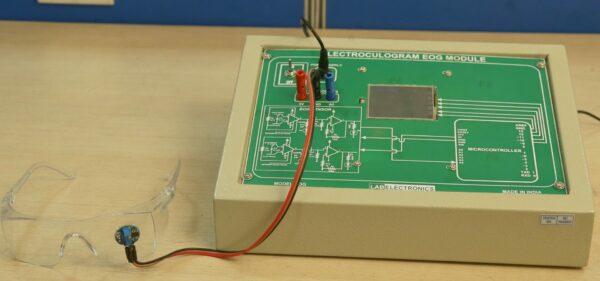
The Electrooculogram (EOG) Module is a biomedical system used to measure eye movement and position by detecting the electrical potential difference between the cornea and retina. It is widely used in neurology, ophthalmology, human-computer interaction (HCI), assistive technologies, and sleep studies.
Applications
🔹 Neurology & Ophthalmology – Diagnosing eye disorders and neurological conditions.
🔹 Human-Computer Interaction (HCI) – Controlling devices using eye movement.
🔹 Assistive Technologies – Helping people with disabilities control wheelchairs and computers.
🔹 Sleep Studies & Cognitive Research – Monitoring rapid eye movement (REM) sleep cycles.
🔹 Virtual Reality (VR) & Gaming – Enhancing eye-tracking applications in digital interfaces.
🔹 Biomedical Research – Understanding eye movement patterns and visual focus.
Features
🔹 Real-time eye movement tracking
🔹 Non-invasive and painless signal acquisition
🔹 Highly sensitive electrodes for accurate detection
🔹 Portable and wearable EOG sensor designs available
🔹 Integration with AI & Machine Learning for automated analysis
🔹 Cloud connectivity for remote research and monitoring


Advantages
🔹 Non-invasive and comfortable for long-term monitoring
🔹 Accurate detection of eye movements and blinks
🔹 Real-time signal analysis for medical diagnostics and research
🔹 Portable and user-friendly for clinical and experimental use
🔹 Can be integrated with AI and IoT for advanced applications
The EOG Module is a cutting-edge tool for eye movement analysis, neurology, and assistive technologies. With advancements in AI, IoT, and wearable devices, EOG-based systems are revolutionizing healthcare, human-computer interaction, and cognitive research, making eye tracking more accessible and efficient.
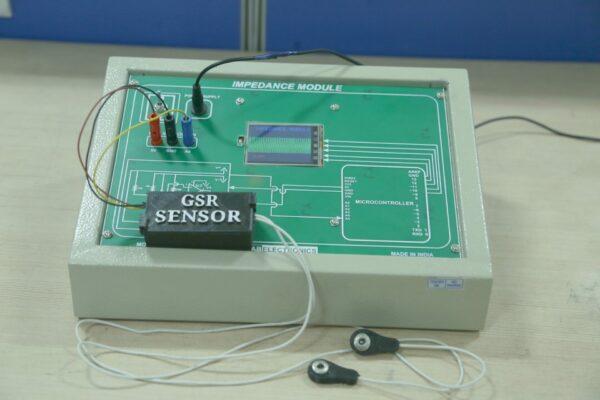
The Impedance Module is a biomedical system designed to measure electrical impedance in biological tissues. It is widely used in medical diagnostics, body composition analysis, respiratory monitoring, and bioelectrical impedance analysis (BIA). By analyzing impedance variations, this module helps in assessing tissue properties, fluid distribution, and physiological changes.
Applications
🔹 Body Composition Analysis (BIA) – Measuring fat, muscle, and water content in the body.
🔹 Respiratory Monitoring – Tracking lung function through impedance variations.
🔹 Cardiac Monitoring – Assessing heart and blood flow conditions.
🔹 Tissue Characterization – Differentiating between healthy and diseased tissues.
🔹 Biomedical Research – Studying electrical properties of biological tissues.
🔹 Wearable Health Devices – Enabling real-time monitoring of body impedance.
Features
🔹 Real-time impedance measurement for tissue analysis
🔹 Non-invasive and minimally invasive testing options
🔹 Portable and wearable impedance sensor designs available
🔹 High accuracy with noise filtering for precise readings
🔹 Integration with AI & Machine Learning for advanced diagnostics
🔹 Cloud connectivity for remote healthcare applications


Advantages
🔹 Non-invasive and safe for medical diagnostics
🔹 Accurate detection of physiological and metabolic changes
🔹 Real-time analysis for immediate clinical applications
🔹 Portable and user-friendly for research and healthcare use
🔹 Integration with IoT and AI for smart medical systems
The Impedance Module is a vital tool in biomedical diagnostics, research, and health monitoring. With advancements in AI, wearable technology, and IoT, impedance-based systems are transforming medical diagnostics, fitness tracking, and disease detection, making physiological monitoring more accessible and efficient.
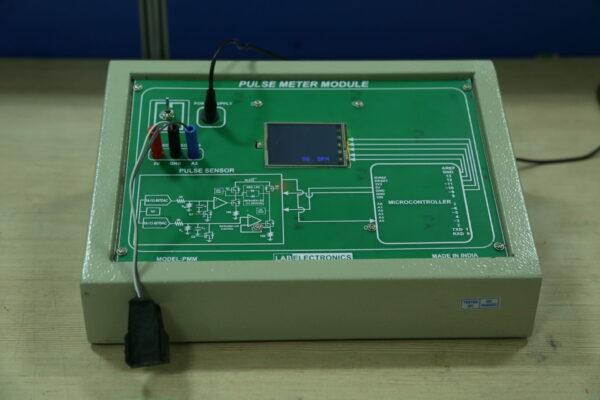
The Pulse Meter Module is a biomedical device used to measure heart rate (pulse) by detecting blood flow variations in peripheral arteries. It is widely used in health monitoring, fitness tracking, patient diagnostics, and wearable medical devices. The module provides real-time pulse readings, making it essential for cardiovascular health assessment and wellness applications.
Applications
🔹 Medical Diagnostics – Monitoring heart rate in hospitals and clinics.
🔹 Fitness & Sports – Used in smartwatches and fitness bands for heart rate tracking.
🔹 Wearable Health Devices – Integrated into smart healthcare monitoring systems.
🔹 Telemedicine & Remote Health Monitoring – Assists in continuous heart rate tracking for patients.
🔹 Biomedical Research – Studying cardiovascular health and blood circulation.
🔹 Stress & Mental Health Monitoring – Evaluating heart rate variability for stress analysis.
Features
🔹 Real-time heart rate monitoring
🔹 Non-invasive and contact-based measurement
🔹 Portable and wearable pulse sensor designs available
🔹 High accuracy with noise reduction technology
🔹 Integration with AI & Machine Learning for predictive analysis
🔹 Cloud connectivity for remote healthcare applications

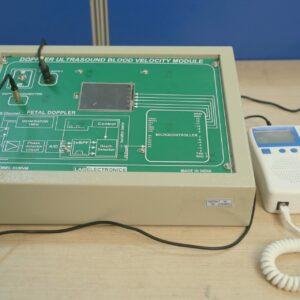
Advantages
🔹 Non-invasive and painless pulse monitoring
🔹 Real-time analysis for instant health assessment
🔹 Portable and easy-to-use for continuous tracking
🔹 Accurate heart rate detection with minimal error
🔹 Integration with IoT and AI for smart healthcare solutions
The Pulse Meter Module is a crucial tool for cardiovascular monitoring, fitness tracking, and medical diagnostics. With advancements in wearable technology, AI, and IoT, pulse meter modules are making heart rate monitoring more accessible, efficient, and accurate for both healthcare professionals and consumers.
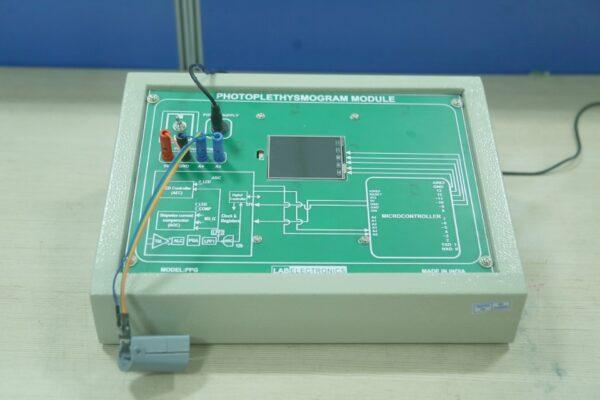
The Photoplethysmogram (PPG) Module is a biomedical system used to measure blood volume changes in tissues using light-based technology. It is widely utilized in heart rate monitoring, oxygen saturation (SpO₂) measurement, vascular health assessment, and wearable medical devices. The PPG module is commonly found in smartwatches, pulse oximeters, and clinical monitoring systems.
Applications
🔹 Cardiovascular Health Monitoring – Used in hospitals for heart rate and oxygen saturation tracking.
🔹 Wearable Health Devices – Integrated into smartwatches, fitness bands, and medical wearables.
🔹 Pulse Oximetry – Measures blood oxygen levels for respiratory health assessment.
🔹 Remote Patient Monitoring (Telemedicine) – Enables continuous health tracking for chronic patients.
🔹 Biomedical Research – Analyzing vascular activity and circulatory system function.
🔹 Stress & Sleep Monitoring – Used to assess heart rate variability and sleep quality.
Features
🔹 Non-invasive, optical-based blood flow monitoring
🔹 Real-time heart rate and SpO₂ measurement
🔹 Highly sensitive with noise reduction for accurate detection
🔹 Portable and wearable PPG sensor designs available
🔹 Integration with AI & Machine Learning for predictive health analysis
🔹 Cloud connectivity for remote patient monitoring


Advantages
🔹 Non-invasive and painless blood flow monitoring
🔹 Real-time analysis for instant health insights
🔹 Portable and user-friendly for continuous tracking
🔹 Accurate and reliable heart rate and oxygen saturation measurement
🔹 Integration with IoT and AI for smart healthcare solutions
The Photoplethysmogram (PPG) Module is an essential tool in modern healthcare, wearable technology, and biomedical research. Its ability to track heart rate, blood oxygen levels, and vascular health in a non-invasive, real-time manner makes it a valuable component in digital health monitoring and telemedicine.
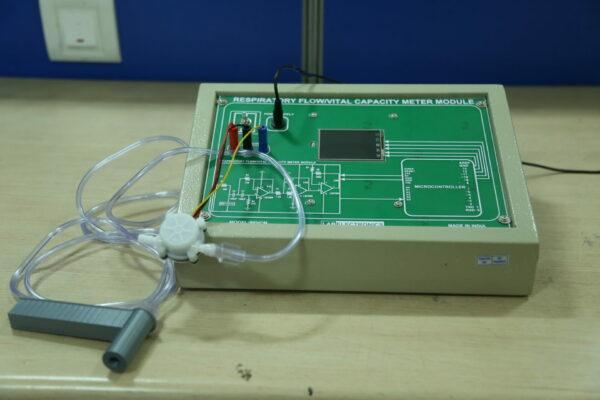
The Respiratory Flow / Vital Capacity Meter Module is a biomedical system designed to measure lung function, airflow rate, and vital capacity (VC). It is widely used in pulmonary diagnostics, respiratory therapy, fitness monitoring, and clinical research. This module helps assess lung health, detect respiratory disorders, and monitor breathing patterns in real-time.
Applications
🔹 Pulmonary Function Testing (PFT) – Assesses lung health in hospitals and clinics.
🔹 Asthma & COPD Monitoring – Tracks breathing patterns in chronic respiratory patients.
🔹 Fitness & Sports Medicine – Measures lung performance in athletes.
🔹 Sleep Apnea & Respiratory Disorders – Detects abnormal breathing patterns.
🔹 Telemedicine & Remote Health Monitoring – Enables home-based lung function tracking.
🔹 Biomedical Research – Studies respiratory mechanics and airflow dynamics.
Features
🔹 Real-time measurement of respiratory flow and vital capacity
🔹 Non-invasive and easy-to-use lung function assessment
🔹 High accuracy with noise reduction for precise readings
🔹 Portable and wearable designs for continuous monitoring
🔹 Integration with AI & Machine Learning for advanced analysis
🔹 Cloud connectivity for remote patient monitoring
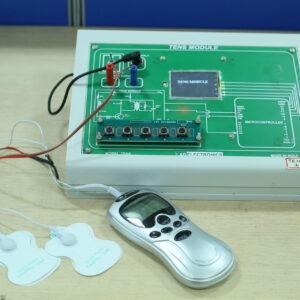

Advantages
🔹 Non-invasive and safe respiratory monitoring
🔹 Accurate detection of airflow rate and lung capacity
🔹 Real-time analysis for immediate clinical applications
🔹 Portable and user-friendly for home and clinical use
🔹 Integration with IoT and AI for smart healthcare solutions
The Respiratory Flow / Vital Capacity Meter Module is an essential tool in pulmonary healthcare, fitness tracking, and biomedical research. With advancements in wearable technology, AI, and IoT, it is transforming respiratory diagnostics and telemedicine, making lung health assessment more accessible and efficient.
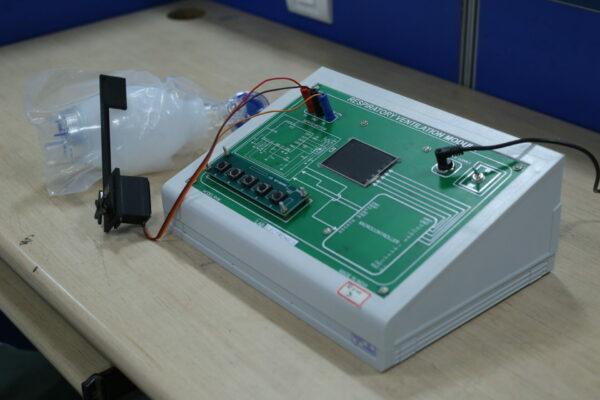
The Respiratory Ventilation Module is a biomedical system designed to monitor and regulate breathing patterns in patients requiring assisted ventilation. It plays a crucial role in critical care, anesthesia, pulmonary diagnostics, and emergency medicine, ensuring proper oxygen exchange and respiratory support. This module is integrated into mechanical ventilators, portable breathing devices, and respiratory therapy systems.
Applications
🔹 ICU & Emergency Care – Used for mechanical ventilation in critically ill patients.
🔹 Anesthesia Machines – Controls breathing during surgeries.
🔹 Home Ventilation & Sleep Apnea Therapy – Provides breathing support for chronic conditions.
🔹 Pulmonary Rehabilitation – Assists patients with respiratory disorders like COPD and ARDS.
🔹 Neonatal & Pediatric Ventilation – Supports breathing in premature infants.
🔹 Telemedicine & Remote Monitoring – Enables real-time respiratory tracking for at-home patients.
Features
🔹 Real-time monitoring of respiratory parameters
🔹 Adaptive ventilation modes (Volume-Controlled, Pressure-Controlled, and Spontaneous Breathing Support)
🔹 Non-invasive and invasive ventilation options
🔹 High-accuracy airflow regulation with safety alarms
🔹 Portable and ICU-compatible ventilation systems available
🔹 Integration with AI & Machine Learning for predictive respiratory analysis
🔹 Cloud connectivity for remote patient monitoring


Advantages
🔹 Ensures adequate oxygen delivery and ventilation support
🔹 Prevents respiratory complications and maintains lung function
🔹 Adjustable settings for personalized breathing support
🔹 Portable and user-friendly designs for different healthcare settings
🔹 Integration with IoT and AI for smart respiratory management
The Respiratory Ventilation Module is a vital component in critical care, respiratory therapy, and emergency medicine. With advancements in AI, IoT, and real-time monitoring, this module is revolutionizing patient care, telemedicine, and home-based respiratory support, ensuring better respiratory health and improved patient outcomes.

The Transcutaneous Electrical Nerve Stimulation (TENS) Module is a biomedical device used for pain relief therapy by delivering low-voltage electrical currents to the skin. It is widely applied in physiotherapy, rehabilitation, pain management, and muscle stimulation therapy. The module helps alleviate chronic pain, post-surgical discomfort, and muscle stiffness without medication, making it a preferred choice in non-invasive pain management.
Applications
🔹 Chronic Pain Management – Reduces pain from arthritis, sciatica, and fibromyalgia.
🔹 Muscle Rehabilitation – Helps in recovery from injuries and surgeries.
🔹 Sports Therapy – Used by athletes for muscle stimulation and pain relief.
🔹 Neuropathic Pain Relief – Alleviates nerve-related pain in diabetes and neural disorders.
🔹 Post-Surgical Recovery – Aids in reducing post-operative discomfort.
🔹 Physiotherapy & Chiropractic Care – Enhances muscle function and relaxation.
Features
🔹 Non-invasive pain relief without medication
🔹 Adjustable frequency and intensity for personalized therapy
🔹 Portable and easy-to-use design
🔹 Safe and effective for long-term use
🔹 Integration with AI & Machine Learning for optimized therapy programs
🔹 Rechargeable or battery-powered for home and clinical applications


Advantages
🔹 Drug-free pain relief with minimal side effects
🔹 Customizable therapy settings for different pain conditions
🔹 Safe for daily use in home and clinical environments
🔹 Compact, lightweight, and portable for on-the-go treatment
🔹 Effective for both acute and chronic pain conditions
The TENS Module is a revolutionary biomedical tool that provides non-invasive, drug-free pain management. With advancements in wearable technology, AI-driven therapy customization, and wireless connectivity, TENS therapy is becoming more accessible, effective, and user-friendly for individuals seeking relief from chronic and acute pain.




